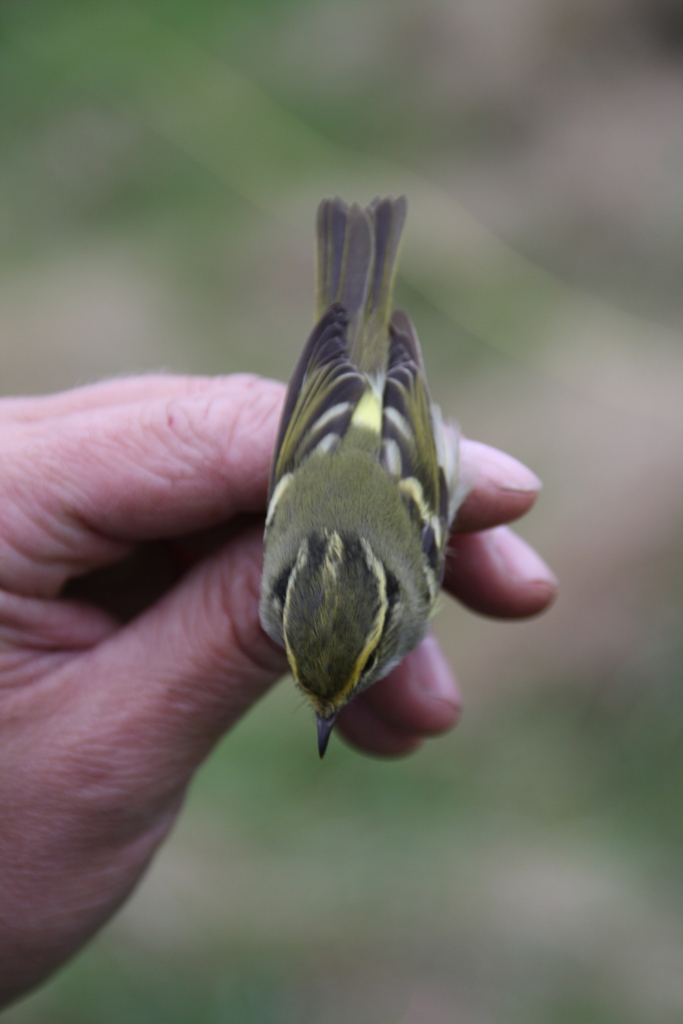Sorry, this entry is only available in Français and Nederlands.
Coturnix coturnix
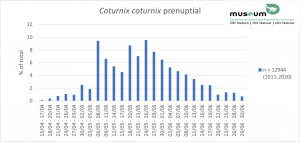

Phylloscopus sp

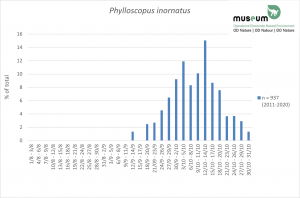
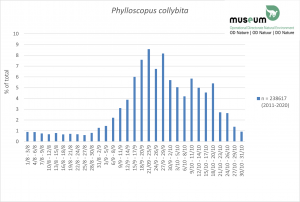
Acrocephalus sp
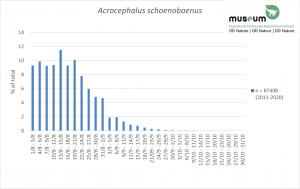

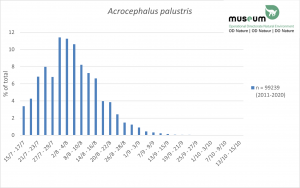
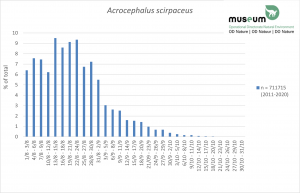
Sylvia sp
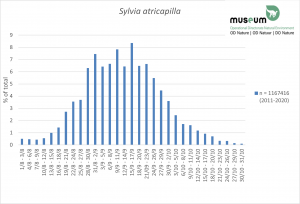
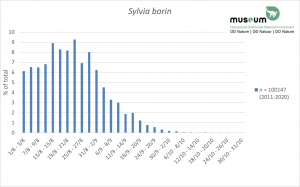
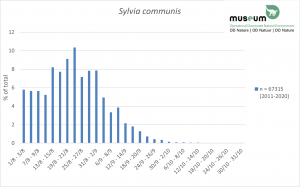
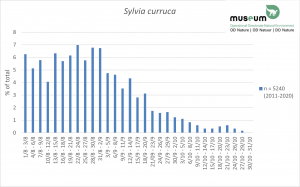
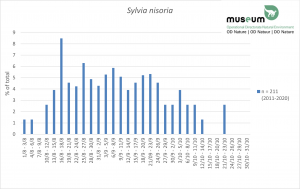
Locustella sp
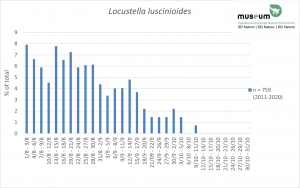
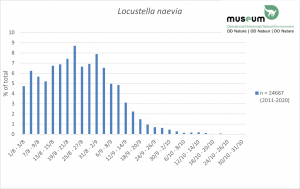
Post-breeding migration phenology for birds ringed in Belgium 2011-2020
Migration is a crucial phase in the annual cycle of wild birds.
In some cases migration is innate, in others it is learned. But it is always a question of successfully joining one area to another, sometimes, often, thousands of kilometres away.
The journey requires remarkable abilities in terms of orientation, reaction to weather conditions, choice and availability of stopover places. The ability to feed efficiently during stopovers in order to replenish the energy reserves used during the first leg so as to be able to cover the next, and so on, is also crucial.
The phenology – the timing – of migration is an essential parameter in successful migration. The bird must leave in time to reach its destination site at the right moment, taking into account the stages to be covered and the food resources available from the beginning to the end of the journey. In the case of insectivorous passerines, these resources are essentially a function of the annual cycle, which in turn depends on the local weather.
Some species/populations consistently adapt their migration timing. Others seem to be “set” on a genetically predetermined schedule.
But what happens when the weather conditions are peculiar, when the climatic situation changes rapidly? To what extent do different bird species react appropriately? And if some do not, to what extent does this influence the evolution of their populations in terms of abundance and distribution?
By studying the migration phenology of different bird species ringed in Belgium during migration, we wish to contribute to this evaluation.
This first presentation of results compiles, in three-day periods, the ringing data collected throughout Belgium over the last 10 years. The results are expressed as a percentage of the total number of birds, from the species concerned, ringed during the reference period. The sample size (“n”) is presented next to each graph. These data are particularly robust considering the sample sizes in relation to the high density of their harvest – the land area of Belgium being ‘only’ 30,528 km².
The inter-annual variation in peak abundance will be presented in a second step.
Thanks to all the RBINS ringers who contributed to the collection of these data and to Paul Vandenbulcke who wrote papageno, the software for encoding these data.
Back to the North !
The first two Bewick’s Swans equipped with a GPS tag during past summer in the tundra of Yamal but at the same site a few days apart, have very recently left their wintering site separated one of the other by … 8000 km!
The first to take the northern route is the adult female 832X. She left Poyang Lake area (southeast China) on 03/03/2016. She had arrived in the region on 25/11/2015 and has successively visited the Sai Hu lakes, Longhu and Longgan lakes. So she stayed a total 99 days near the Yangtze River before resuming her migration back to the north.
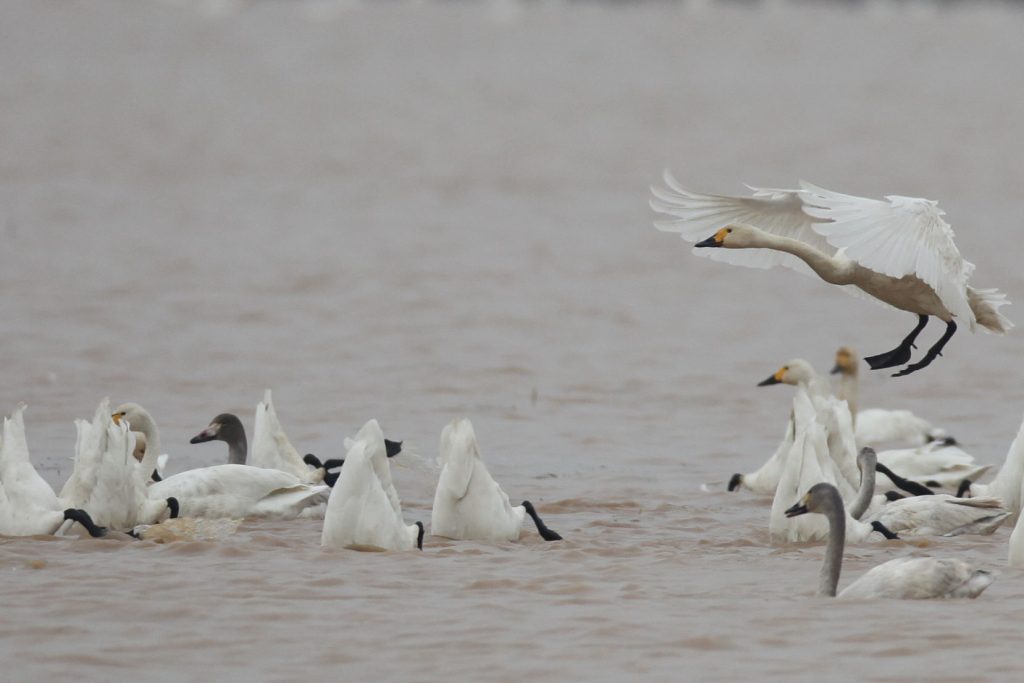
Between 03/03/2016 and 07/03/2016, 832X has traveled 1400 km to the north-northeast with a maximum peak of 215 km in 3 hours. Since she is in halt on the Yellow River in the district of Donghan, 250 km from the border with Mongolia. This is exactly where 865X, another Bewick’s Swan from Yamal having wintered in the Yangtze region, had stopped in last autumn migration.
The second Bewick who started the spring migration is 854X. It is a second-winter male that had (after years of questions !) indicated us the route to the Evros Delta. 854X had arrived in the Evros on 12/12/2015.
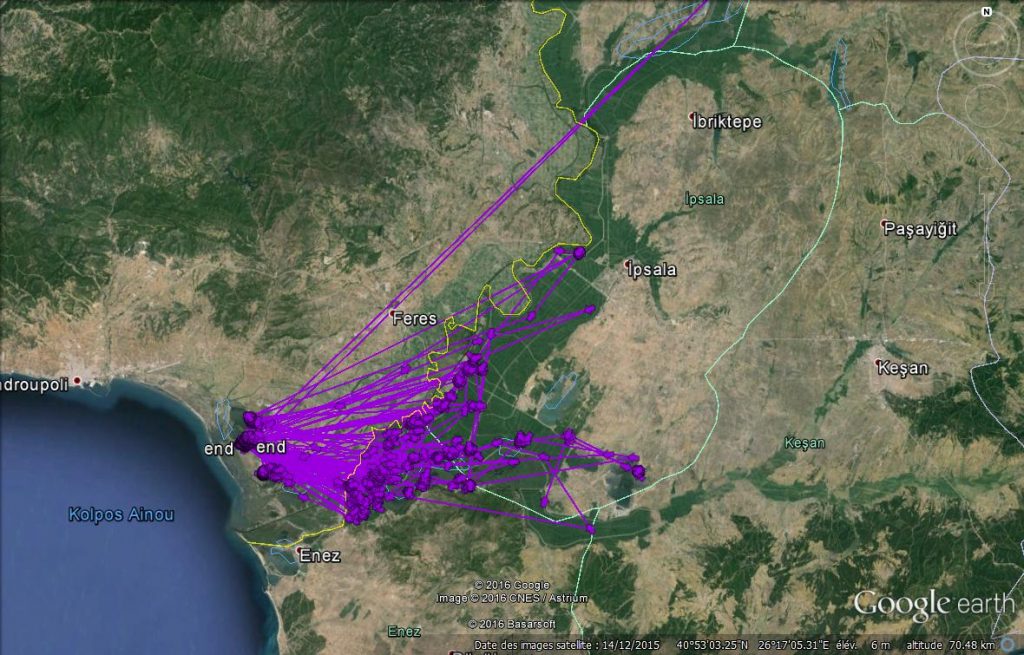
After 86 days of back and forth between Greece and Turkey, the Evros river making the border between the two countries, 854X flew in the late afternoon of 07/03/2016, heading northeast. In a step of 12 hours of continuous flight and a peak of 265 km traveled in 3 hours, 854X flew over the Black Sea in almost straight line to land on the morning of 08/03/2016 in the Nature Reserve of Chernomorsky, just east of the Bay of Tendra, Ukraine.
Twelve hours later, 854X set off again, this time eastward, for a flight of three hours maximum. At nightfall, he landed at sea, a few km off the Gulf of Khorli, a site where gather in the summer thousands of Mute Swans in flightless moult.

The GPS positions received suggests that during the night, 854X drifted 11 km towards the east. At dawn on 09/03/2016, he took off for a short 90 km flight which led he to the impressive hyper saline lagoons of Sivash, north of Crimea. He stayed there four days and was located several times in cropland area close to water bodies. Most likely he was feeding there.
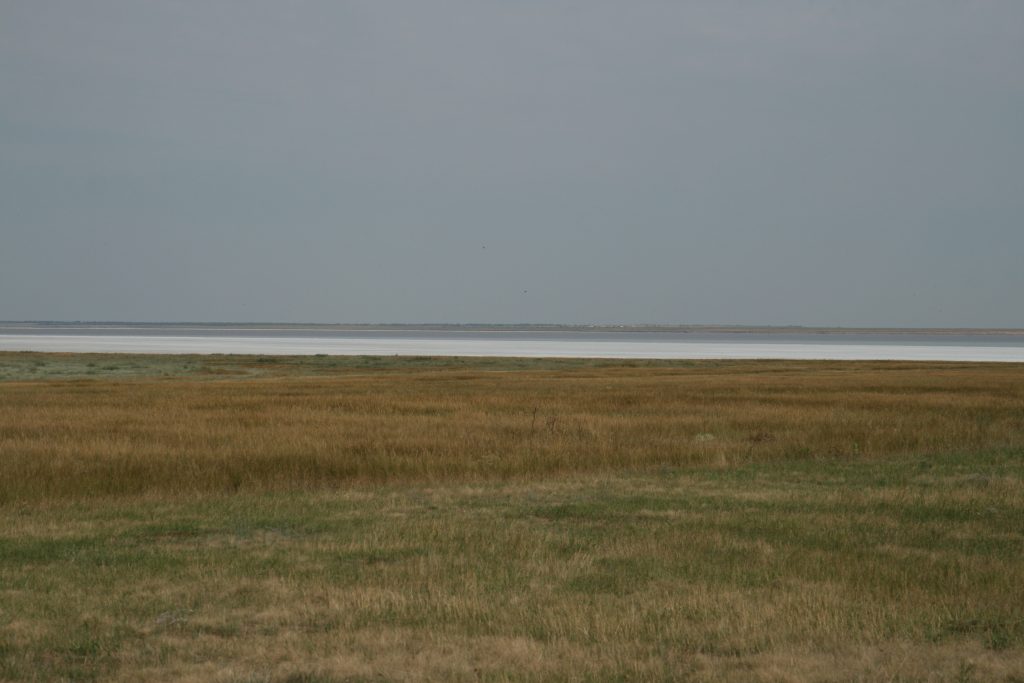
854X then resumed flight to the east for about 40 km. New stop at night, but this time on Sea of Azov. And new drift during the night, up to 24 km from the coast this time. This morning, 14/03/2016, 854X resumed its journey shortly after 05:00 am (local time) always towards the east. Six hours later he was located 290 km to the east, probably when flying. 854X was then close to Beisug liman where he has stopped 51 days during post-breeding migration 2015, prior to arrive in the Evros Delta. Will he halt there again or will he continue his journey eastward to Russia and Kazakhstan?
To be continued !
Bewick ‘s Swan with yellow neckband and Lesser white-fronted Geese
February 10, 6:50, like every morning watching the swan roost begins at sunrise. Thousands of swans, mainly Bewick, gathered to spend the night safely in the marshes of Dimitriades. The flock lies on 1 km; this is a very impressive sight!
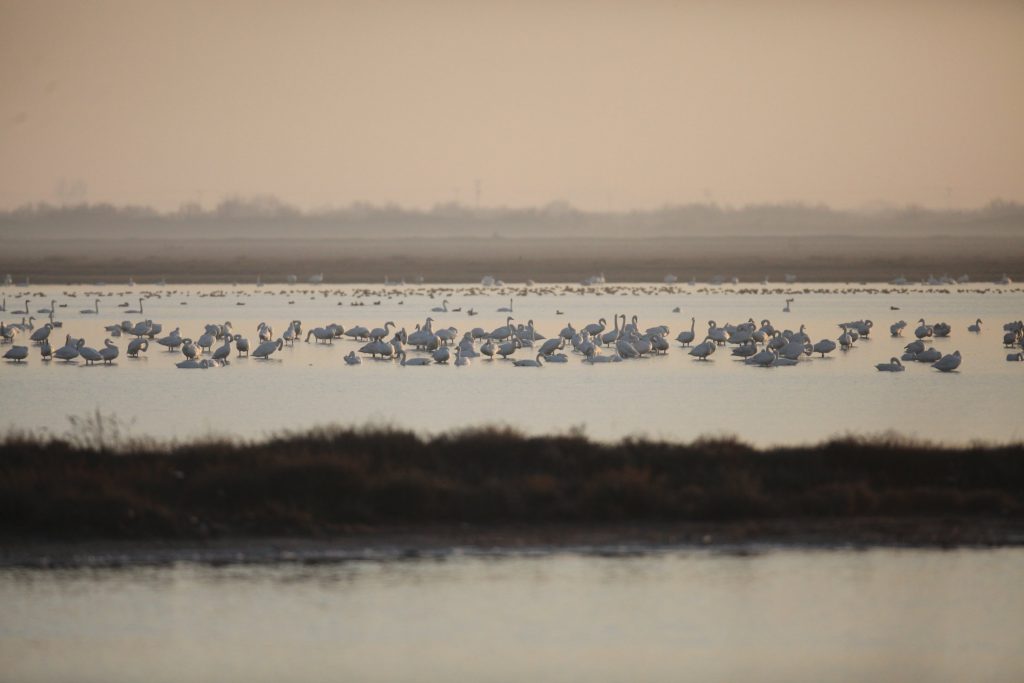
Most swans are swimming in shallow water, a minority is standing on the flooded mudflats. The contacts are intense, swans are very social birds outside the breeding season. They constantly vocalize. Their calls are very melodious and reach their climax when taking off. Flocks follow each other at regular interval.
8:03, two families of Bewick’s Swans take flight from the southwest corner of the roost. In doing so, they give off the view to another small group. He’s there ! The Bewick’s Swan with the yellow neckband observed there 5 days ago. But at the time the code could not be read. It makes a lot less windy today and the distance is only 400 m. It will works! After a few minutes of scrutinizing with the telescope at 70x zoom, the 4-characters code appears. No more doubts, it’s a Bewick’s Swan ringed in the Netherlands. Encoding the code on geese.org platform that compiles data from swans and geese tagging programs in Europe allows to immediately know its origin. That swan was marked on 26/12/2014 in Noord Brabant, near the city of s’Hertogenbosch. He quickly left the area to continue its wintering in Belgium, 50 km south-west, in the north of the province of Antwerp where he remained until 01/03/2015. He will then be observed on 31/03/2015 in Lithuania, when migrating to Siberia. And next winter he is now in Greece.
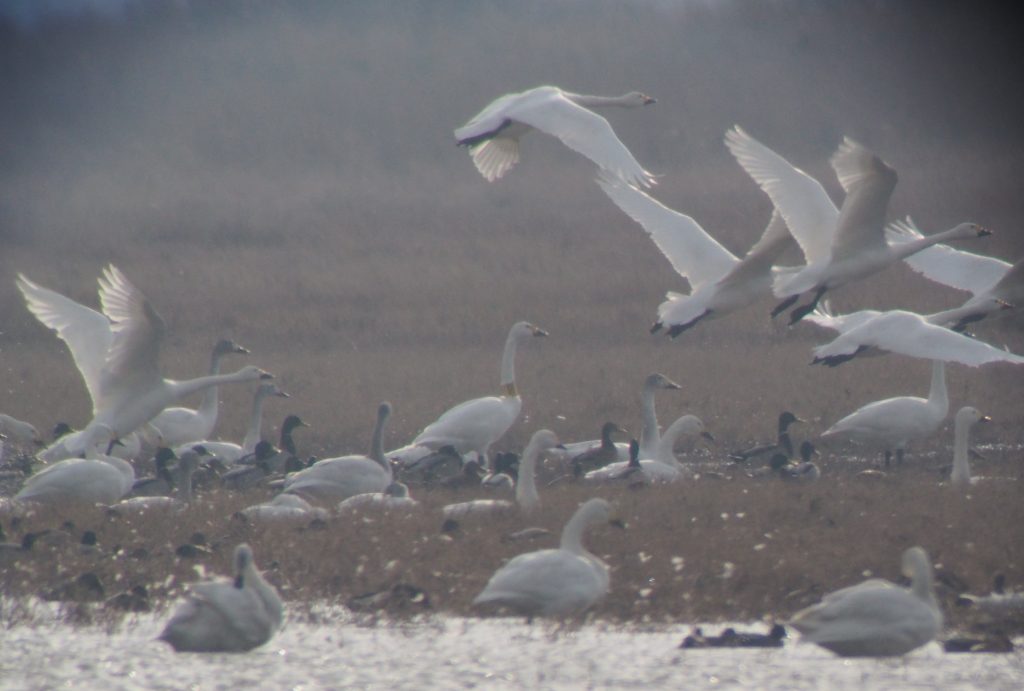
This is the third Bewick’s Swan ringed in the Netherlands we are seeing in the Evros Delta. The previous was on 19/02/2010. Is this a new indication of the fact that the Bewick’s Swans traditionally wintering in this country are now deserting it ? But if that’s the case (3 observations do not allow to draw conclusions) why such a phenomenon? What happens in the Netherlands making that the country is no more favoured by the Bewick’s Swans ? Obviously, no one knows for sure.
Next objective of the day : search for Lesser white-fronted Geese, another species in decline which also winters in the Evros Delta.
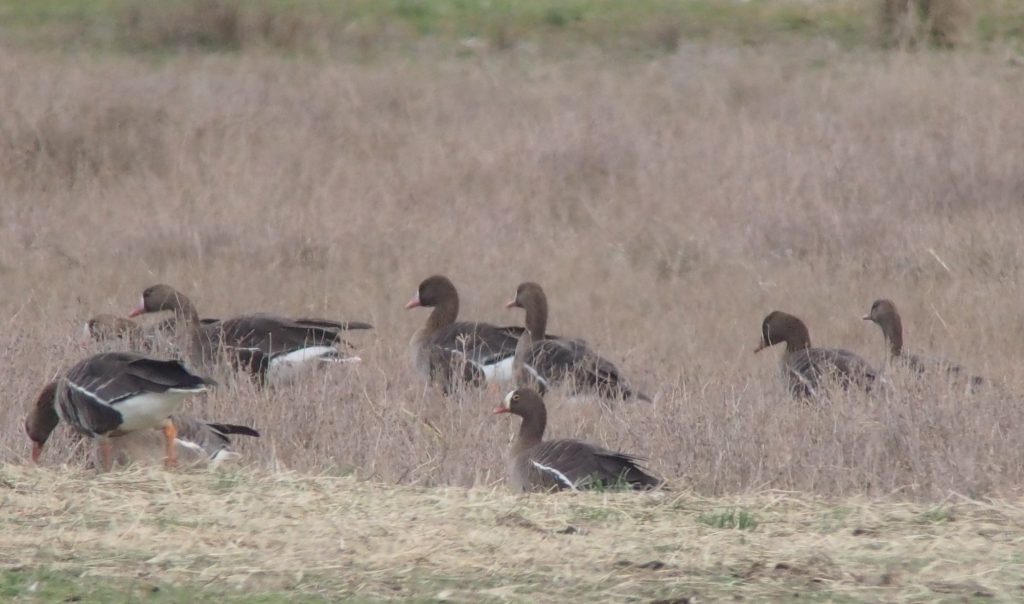
Ornithologists of the Forest Research Institute of Thessaloniki, a partner to the program on Bewick’s Swan, study their diet by analyzing the cell fragments of plants, extracted from droppings collected in the marsh Dimitriades. What a program!
The foraging sites of 854X
09/02/2016, the objective of the day: to identify the characteristics of the foraging sites of 854X, the Bewick’s Swan “sentinel” equipped with a GPS transmitter in Siberia.
The data transmitted from the arrival of the swan in the Delta of Evros indicate that it forage exclusively in the Turkish part of the Delta. The reason is simple: this area is covered by 99% of rice fields. Natural habitats, which contribute to the exceptional biodiversity of the Greek part of the Delta, were completely destroyed on the Turkish side. It is striking to observe a satellite map: east of the river, everything is a deep green: it is the rice fields. While to the west, a patchwork of colors of various shapes and sizes can be observed. There are obviously areas that are cultivated on the Greek part but not intensely while in coastal areas, salt marshes and lagoons stretch out of sight.
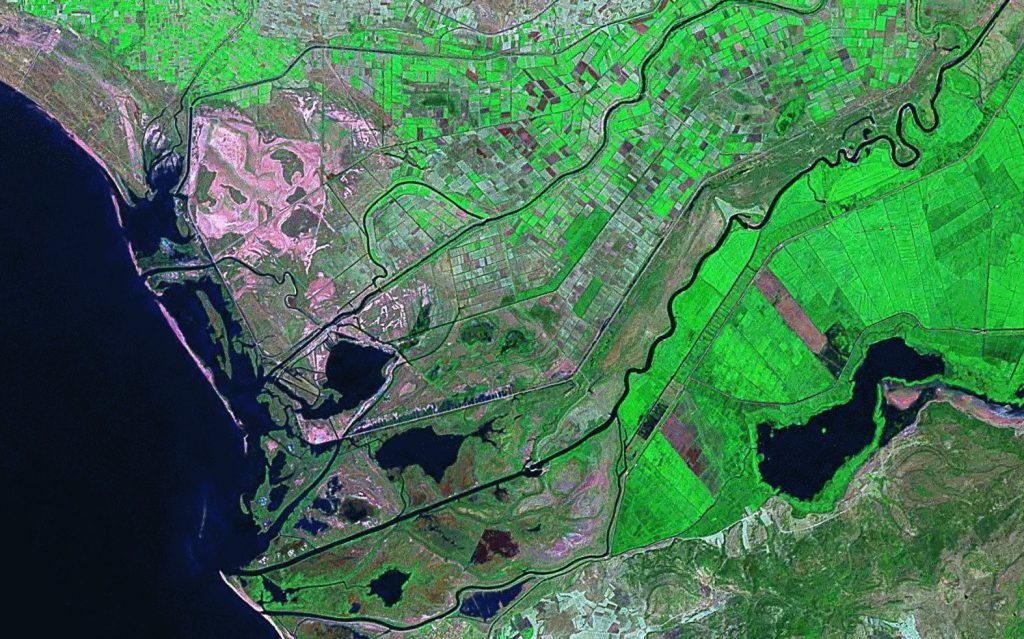
Let’s go to Turkey. A part of the rice fields is completely dry, the stubbles left after harvest line up in endless furrows. Another part is partially flooded, the bottom of the grooves being filled with water probably consecutively to the rains of the past week. A third part is completely under water, forming lakes of several km². It is on these flooded fields that gathers the majority of swans. Part of the area cannot yet be surveyed because it is under military control.
Most swans are found together in 4 huge flocks of 1500 to 4000 individuals. Small groups with a few dozen to a few hundred swans are scattered here and there. The large flocks are composed of three species of swans: Mute, Bewick’s and Whooper. All are feeding on the roots of the rice plants that were planted last spring. All sites where 854X has been located, and that could be visited, are indeed flooded rice fields.

Apart from swans, there is almost no other birds in this part of the Delta. This is probably the consequence of the disappearance of natural habitats and the development of rice monoculture. A very important hunting pressure is another explanation: at regular intervals in each rice field one may see hunting huts when gun cartridges litter the ground by the hundreds. At 14:45 in the middle of a group of 2,700 swans feeding in a flooded rice field near the village of Enes, there he is. 854X is carefully preening.
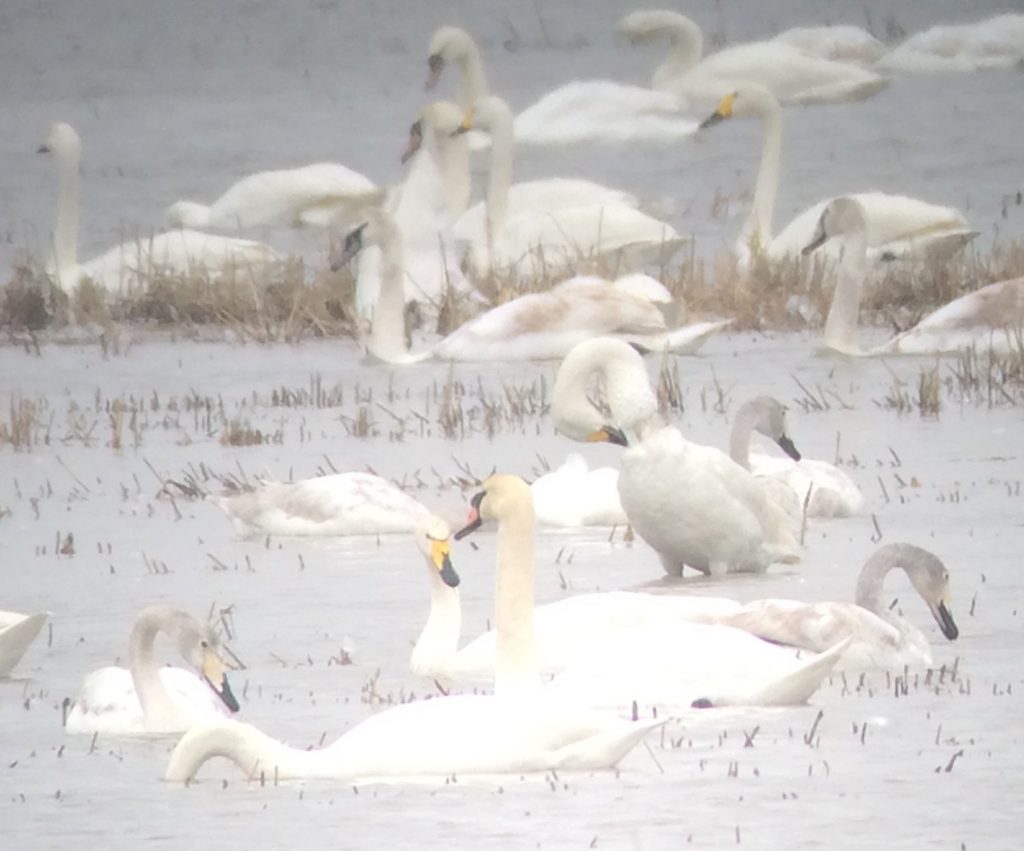
It’s a chance because yesterday it was located 26 km north, near the village of Ipsala. There are exactly 179 days we were together at the mouth of the river Yuribey on the shores of the Arctic Ocean.

